
Half year results for the six months ended 30 June 2018 [PDF]



| Six months ended 30 June | H1 2018 | H1 2017 |
|---|---|---|
| Key financial performance measures | ||
| EBITDA (£ million)(1) | 102 | 121 |
| Underlying earnings (£ million)(2) | 7 | 9 |
| Underlying earnings per share (pence)(2) | 1.6 | 2.2 |
| Interim dividends (pence per share) | 5.6 | 4.9 |
| Net cash from operating activities (£ million) | 112 | 197 |
| Net debt (£ million)(3) | 366 | 372 |
| Statutory accounting measures | ||
| Operating profit/(loss) (£ million) | 12 | (61) |
| Loss before tax (£ million) | (11) | (104) |
| Reported basic loss per share (pence) | (1) | (21) |
 “Drax continues to be at the heart of decarbonising UK energy, securing government support to convert a fourth unit to biomass and piloting a Bioenergy Carbon Capture and Storage project, supporting the UK Government’s carbon capture and storage ambitions.
“Drax continues to be at the heart of decarbonising UK energy, securing government support to convert a fourth unit to biomass and piloting a Bioenergy Carbon Capture and Storage project, supporting the UK Government’s carbon capture and storage ambitions.
“Full year EBITDA expectations remain unchanged. However, first half EBITDA was lower, principally due to two specific generation outages. We made excellent progress with our Pellet Production business, driving down costs while producing at record levels and our B2B Energy Supply business continues to increase customer numbers. We also remain on track with our investment projects: the conversion of a fourth unit to biomass, and the development of our OCGT and coal-to-gas repowering options.
“We remain focused on safe and efficient operations and returns to shareholders and expect to declare a full year dividend of £56 million for 2018.”

Drax Group plc (“Drax”) confirms that it will be announcing its Half Year Results for the six months ended 30 June 2018 on Tuesday 24 July 2018.
Information regarding the results presentation meeting and webcast is detailed below.
Management will host a presentation for analysts and investors at 9:00am (UK Time), Tuesday 24 July 2018, at JP Morgan, 60 Victoria Embankment, London, EC4Y 0JP.
Would anyone wishing to attend please confirm by e-mailing [email protected] or calling Christopher Laing at FTI Consulting on +44 (0)20 3319 5650.
The meeting can also be accessed remotely via a live webcast, as detailed below. After the meeting, the webcast will be made available and access details of this recording are also set out below.
A copy of the presentation will be made available from 7:00am (UK time) on Tuesday 24 July 2018 for download at: www.drax.com>>investors>>results-reports-agm>> #investor-relations-presentations or use the link https://www.drax.com/investors/results-reports-agm/#investor-relations-presentations
|
Event Title: |
Drax Group plc: Half Year Results |
|
Event Date: |
Tuesday 24 July 2018 |
|
Event Time: |
9:00am (UK time) |
|
Webcast Live Event Link: |
https://cache.merchantcantos.com/webcast/webcaster/4000/7464/16531/105055/Lobby/default.htm |
|
Start Date: |
Tuesday 24 July 2018 |
|
Delete Date: |
Monday 15 July 2019 |
|
Archive Link: |
https://cache.merchantcantos.com/webcast/webcaster/4000/7464/16531/105055/Lobby/default.htm |
For further information please contact Christopher Laing on +44 (0)20 3319 5650.
|
Website: |

It’s not news to say Great Britain’s electricity system is changing. Low carbon electricity sources are on course to go from 22% of national generation in 2010 to 58% by 2020 as installation of wind and solar systems continue to grow.
But while there has been much change in the sources fuelling electricity generation, the system itself is still adapting to this transformation.
When the national grid was first established in the 1920s, it was designed with coal and big spinning turbines in mind. It meant that just about every megawatt coming onto the system was generated by thermal power plants. As a result, the mechanisms keeping the entire system stable – from the way frequency and voltage is managed to how to start up the country after a mass black out – relied on the same technology. These ‘ancillary services’ – those that stabilise the system – are crucial to maintaining a balanced electricity system.
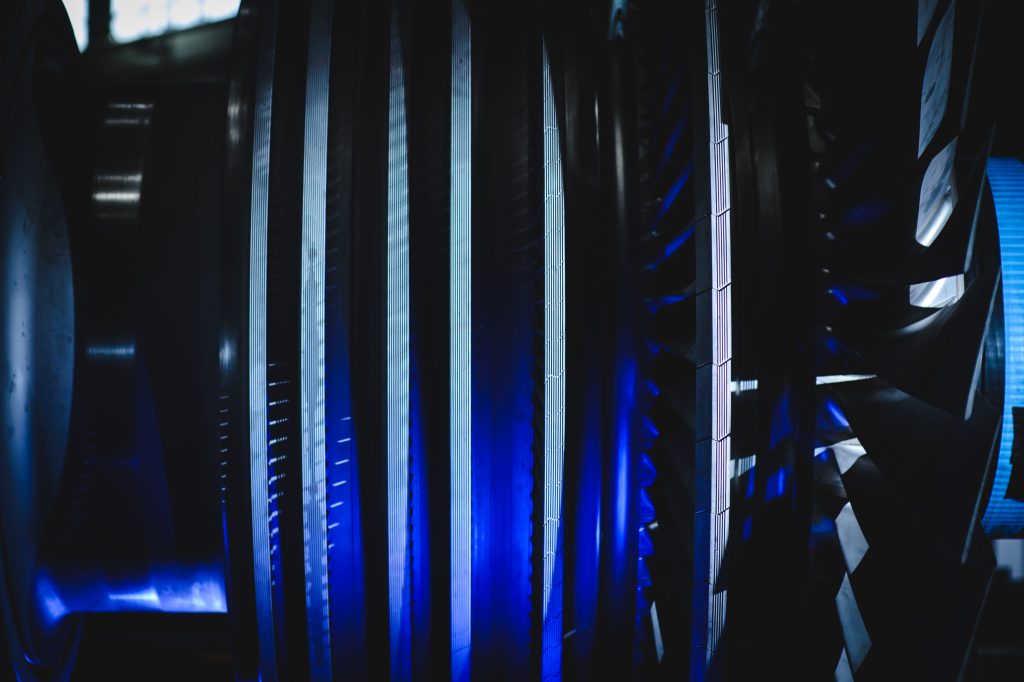
“Ancillary services are needed to make sure demand is met by generation, and that generation gets from one place to the next with no interruptions,” explains Ian Foy, Head of Ancillary Services at Drax. “Because what’s important is that all demand must be met instantaneously.”
In today’s power system, however, weather dependent technology like offshore wind and home solar panels are increasingly making up the country’s electricity generation. Their intermittency or variability is, in turn, impacting both the stability of the grid and how ancillary services are provided.
Running a large power system with as much as 85% intermittent generation – for example on a very windy, clear, sunny day – is thought to be achievable. It isn’t a scenario anticipated for the large island of Great Britain. But to deal with the fast-pace of change on its power system which recently managed to briefly achieve 47% wind in its fuel mix, there is a need to develop new techniques, technologies and ways of working to change how the country’s grid is balanced.

One of the technologies that’s expected to provide an increasing amount of balancing services is grid-scale batteries. One stabilisation function offered by batteries (and other electricity storage options) is to provide reserve at times when demand peaks or troughs. This matches electricity demand and generation.
Combined with their ability to respond quickly to changes in frequency, batteries can be a significant source of frequency response.
Batteries can also absorb and generate reactive power, which can then be deployed to push voltage up or down when it starts to creep too far from the 400kV or 275kV target (depending on the powerlines the electricity is travelling along) needed to safely move electricity around the grid.
The challenge with batteries is that the quantity of megawatt hours (MWh) required to compensate for intermittency is very large. The difference between the peak and trough on any day may be more than 20 GW for several hours (see for yourself at Electric Insights).
The significant price reductions in battery storage apply to technologies with short duration (or low volume MWhs). These are the technologies which have been developed at scale recently but will probably struggle to make up in any large quantity any shortfalls in generation resulting from prolonged periods of low intermittent generation.
A challenge currently being addressed relates to maintenance of battery state of charge. This is a consequence of battery storage having a cycle efficiency of less than 100%. This means that losses from continuous charging and recharging will have to be replenished from the available generation to avoid batteries going empty and being unavailable for grid services.
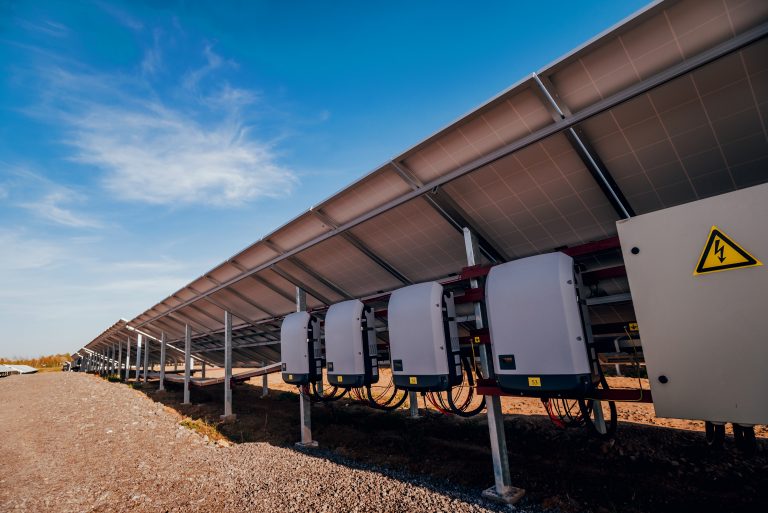
Rather than relying on batteries to provide ancillary services to support intermittent generation, technical advancements are allowing the wind and solar facilities – which are generating more and more of the country’s electricity – to do so themselves.
The traditional photovoltaic (PV) inverters found on solar arrays were initially designed to push out as much active, or real, power as possible. However, new smart PV inverters are capable of providing or absorbing reactive power when it is needed to help control voltage, as well as continuing to provide active power.
The major advantage of smart inverters is the limited equipment update required to existing solar farms to allow them to offer reactive power control. The challenge here is that PV is embedded in distribution systems and therefore reactive services they provide may not cure all the problems on the transmission system.
Similarly, existing wind installations have traditionally focused on getting the greatest amount of megawatts from the available resources, but with fewer thermal power stations on the grid, ways of balancing the system with wind turbines are also being developed.

Inertia is the force that comes from heavy spinning generators and acts as a damper on the system to limit the rate of change of frequency fluctuations. While wind turbines have massive rotating equipment, they are not connected to the grid in a way that they automatically provide inertia, however, research is exploring what’s known as ‘inertial response emulation’ that may allow wind turbines to offer faster frequency response.
This works through an algorithm that measures grid frequency and controls the power output of a wind turbine or whole farm to compensate for frequency deviations or quickly provide increases or decreases in power on the system. Inertial response emulation cannot be a complete substitute for inertia but can reduce the minimum required inertia on the system.
Even in a future where the majority of the country’s electricity comes from renewable sources, thermal generators may still be able to provide benefits to the system by running in ‘synchronous compensation’ mode i.e. producing or consuming reactive power without real power.
However, what is vitally important for the future of balancing services in Great Britain is a healthy, transparent and investable market for generators, demand side response and storage, whether connected on the transmission or distribution networks.

One of the primary needs of balancing service providers is greater transparency into how National Grid procures and pays for services. Currently, National Grid does not pay for inertia. With it becoming more important to grid stability, incentive is needed to encourage generators with the capability to provide it. Those technologies that can’t provide inertia, could be encouraged to research and develop ways they could do so in the future.
Standardising the services needed will help ensure providers deliver balancing products to the same level needed to support the grid. It would also benefit from fixed requirements and timings for such services. Bundling related products, such as reserve and frequency control, and active power and voltage management, will also offer operational and cost efficiencies to the providers.
Driving investment in balancing services for the future, ultimately, requires the availability of longer-term contracts to offer financial certainty for the providers and their investors.
For the challenges of decarbonisation to be met in a socially responsible way, Great Britain’s power system must be operated at as low a cost as possible to consumers.
With new technologies, almost anything could be possible. But operating them has to be affordable. In many cases, it may take time for costs of long duration batteries to come down – as it has with the most recent offshore wind projects to take Contracts for Difference (CfDs) and Drax’s Unit 4 coal-to-biomass conversion under the Renewables Obligation (RO) scheme.
Thermal power technologies such as gas that has proven capabilities in ancillary services markets can at least be used in a transitional period over the coming decades until a low carbon solution is developed.
Biomass will continue to be an important source of flexible power. This summer, at Drax, biomass units are helping to balance the system. It is the only low carbon option which can displace the services provided by coal or gas entirely.
In the past the race to decarbonisation was largely based around building as great a renewable capacity as possible. This approach has succeeded in significantly scaling up carbon-free electricity’s role on Great Britain’s electricity network. However, for the grid to remain stable in the wake of this influx, all parties must adapt to provide the balancing services needed.
This story is part of a series on the lesser-known electricity markets within the areas of balancing services, system support services and ancillary services. Read more about black start, system inertia, frequency response, reactive power and reserve power. View a summary at The great balancing act: what it takes to keep the power grid stable and find out what lies ahead by reading Maintaining electricity grid stability during rapid decarbonisation.
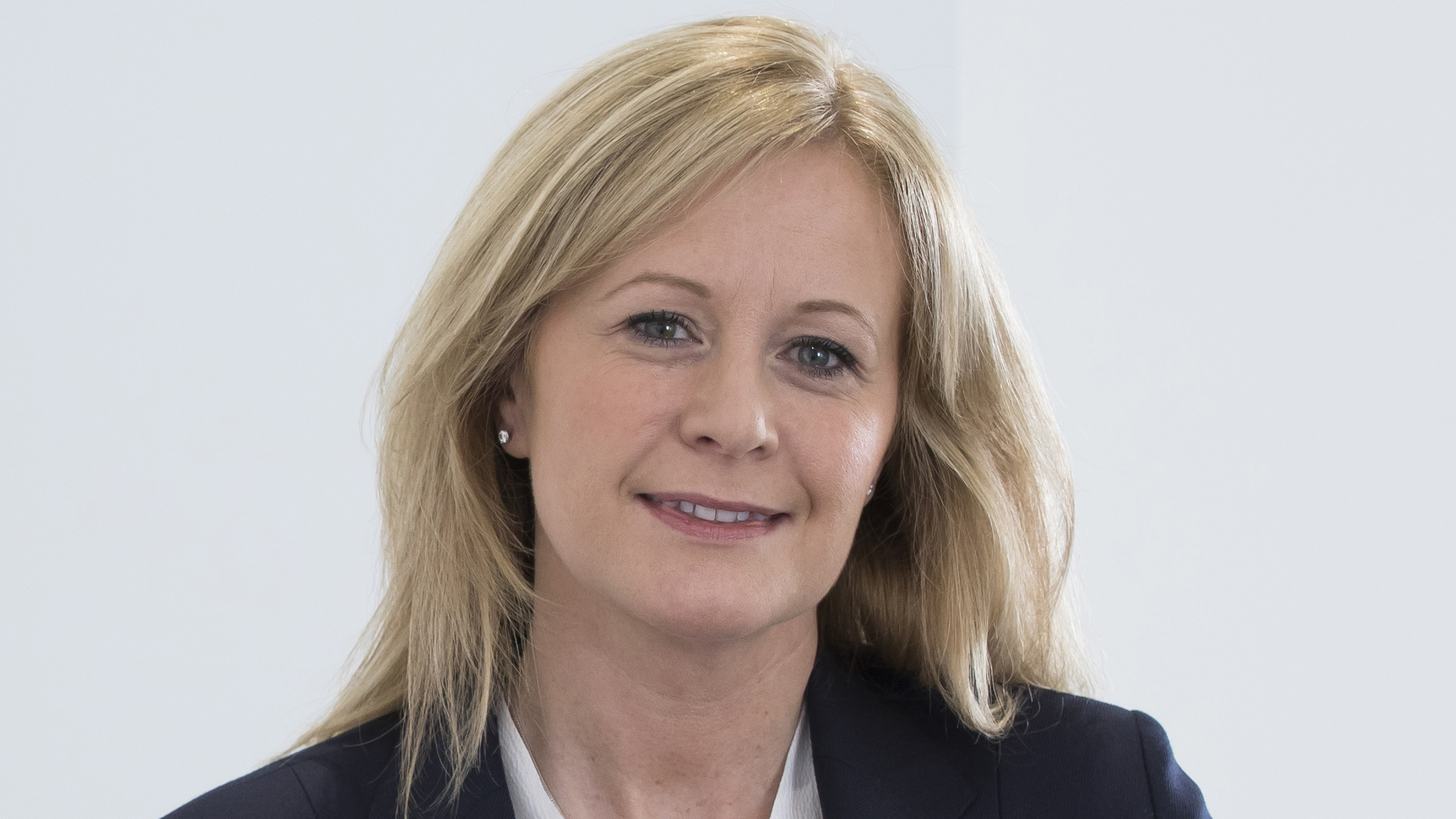
The Board of Drax Group plc (“Drax”) is pleased to announce that Vanessa Simms is to be appointed as a Non-Executive Director, with effect from 19 June 2018.
Vanessa is Chief Financial Officer at Grainger plc (1) and has a strong background in listed businesses, with more than 20 years experience working in senior leadership roles at Unite Group plc, SEGRO plc, Stryker Corp and Vodafone Group plc. She has particular expertise in leading and implementing strategic change.
Philip Cox, Chairman of Drax, said: “The directors are delighted to welcome Vanessa to the Board. Her financial and commercial experience from a broad range of companies and industries will provide real value as Drax delivers on its purpose to help change the way energy is generated, supplied and used for a better future.”
Vanessa added: “I’m looking forward to joining the Board of Drax at this key time for sustainable energy in the UK.”
Vanessa has been appointed as a member of the Company’s Audit Committee. She will work closely with the current Audit Chair, David Lindsell, in anticipation of her succeeding David when he steps down in 2019.
She has also been appointed as a member of the Company’s Nomination and Remuneration committees.
Drax Investor Relations: Mark Strafford
+44 (0) 1757 612 491
Drax Media Relations: Ali Lewis
+44 (0) 1757 612 165
Website: www.drax.com
END

For more than 50 years Great Britain has been electrically connected to Europe. The first under-sea interconnector between British shores and the continent was installed in 1961 and could transmit 160 megawatts (MW) of power. Today there is 4 gigawatts (GW) in interconnector capacity between Great Britain, France, Ireland and the Netherlands – and there’s more on the way.
By the mid-2020s some estimates suggest interconnector capacity will reach 18 GW thanks to new connections with Germany, Denmark and Norway. The government expects imports to account for 22% of electricity supply by 2025, up from 6% in 2017.
This increased connectivity is often held up as a means of securing electricity supply and while this is largely true, it doesn’t tell the full story.
In fact, this plan could risk creating a dependency on imported electricity at a time when flexibility and diversity of power sources are key to meeting demand in an increasingly decentralised, decarbonising system.
Great Britain needs to be connected and have a close relationship with its European neighbours, but this should not come at the expense of its power supply, power price or ongoing decarbonisation efforts. Yet these are all at risk with too great a reliance on interconnection.
To secure a long term, stable power system tomorrow, these issues need to be addressed today.

At their simplest, interconnectors are good for the power system. They connect the relatively small British Isles to a significant network of electricity generators and consumers. This is good for both helping secure supply and for broadening the market for domestic power, but the system in which interconnectors operate isn’t working.
Since 2015 interconnectors have had the right to bid against domestic generators in the government’s capacity market auctions.
The government uses these auctions to award contracts to generators that can provide electricity to the grid through existing or proposed facilities. The original intention was also to allow foreign generators to participate. As an interim step, the transmission equipment used to supply foreign generators’ power into the GB market – interconnectors – have been allowed to take part. In practice, interconnectors end up with an economic advantage over other electricity producers.
Firstly, interconnectors are not required to pay to use the national transmission system like domestic generators are. This charge is paid to National Grid to cover the cost of installation and maintenance of the substations, pylons, poles and cables that make up the transmission network. Plus the cost of system support services keeping the grid stable. Interconnectors are exempt from paying these despite the fact imported electricity must be transported and balanced within England, Scotland and Wales in the same way as domestic electricity.
Secondly, interconnectors don’t pay carbon tax in the GB energy market. The Carbon Price Floor is one of the cornerstones of Great Britain’s decarbonisation efforts and has enabled the country’s electricity system to become the seventh least carbon-intense of the world’s most power intensive systems in 2016, up from 20th in 2012.
Interconnectors themselves do not emit carbon dioxide (CO2) in Great Britain, but this does not mean they are emission-free. France’s baseload electricity comes largely from its low-carbon nuclear fleet, but the Netherlands and Ireland are still largely dependent on fossil fuels for power. Because the European grid is so interconnected even countries which don’t yet have a direct link to Great Britain, such as Germany with its high carbon lignite power stations, also contribute to the European grid’s supply. The Neuconnect link is planned to connect Germany and GB in the late 2020s.
Not being subject to the UK’s carbon tax – only to the European Union’s Emissions Trading System (EU ETS) which puts a much lower price on CO2 – imported power can be offered cheaper than domestic, lower-carbon power. This not only puts Great Britain at risk of importing higher carbon electricity in some cases, but also exporting carbon emissions to our neighbours when their power price is higher to that in the GB market..
This prevents domestic generators from winning contracts to add capacity or develop new projects that would secure a longer-term, stable future for Great Britain. In fact, introducing more interconnectivity could in some cases end up leading to supply shortages, be they natural or market induced.

The contracts awarded to interconnectors in the capacity market auctions treat purchased electricity as guaranteed. But, any power station can break down – any intermittent renewable can stop generating at short notice. Supply from neighbouring countries is just the same.
Research by Aurora found that historically, interconnectors have often delivered less power than the system operator assumed they would and on occasion exported power at times of peak demand. This happened recently during the Beast of the East, when low temperatures across the continent drove electricity demand soaring.
This European-wide cold spell meant Ireland and France (which has a largely electrified heating system) experienced huge electricity demand spikes, driving power prices up.
As a result, for much of the time between 27 and 28 February Great Britain exported electricity to France to capitalise on its high prices. This not only led to more fossil fuels being burned domestically, but it meant less power was available domestically at a time when our own demand was exceptionally high. Even when the interconnectors do flow in our direction they cannot provide crucial grid services like inertia so our large thermal power stations are often still needed.
It is difficult to say for certain how interconnectors will function during times of high demand in the future due to a lack of long-term data, but that which we do know and have seen suggests they don’t always play to the country’s best interests.
There is still an important role for interconnectors on the Great Britain grid, but to deliver genuine value the system needs to be fairer so they don’t skew the market.
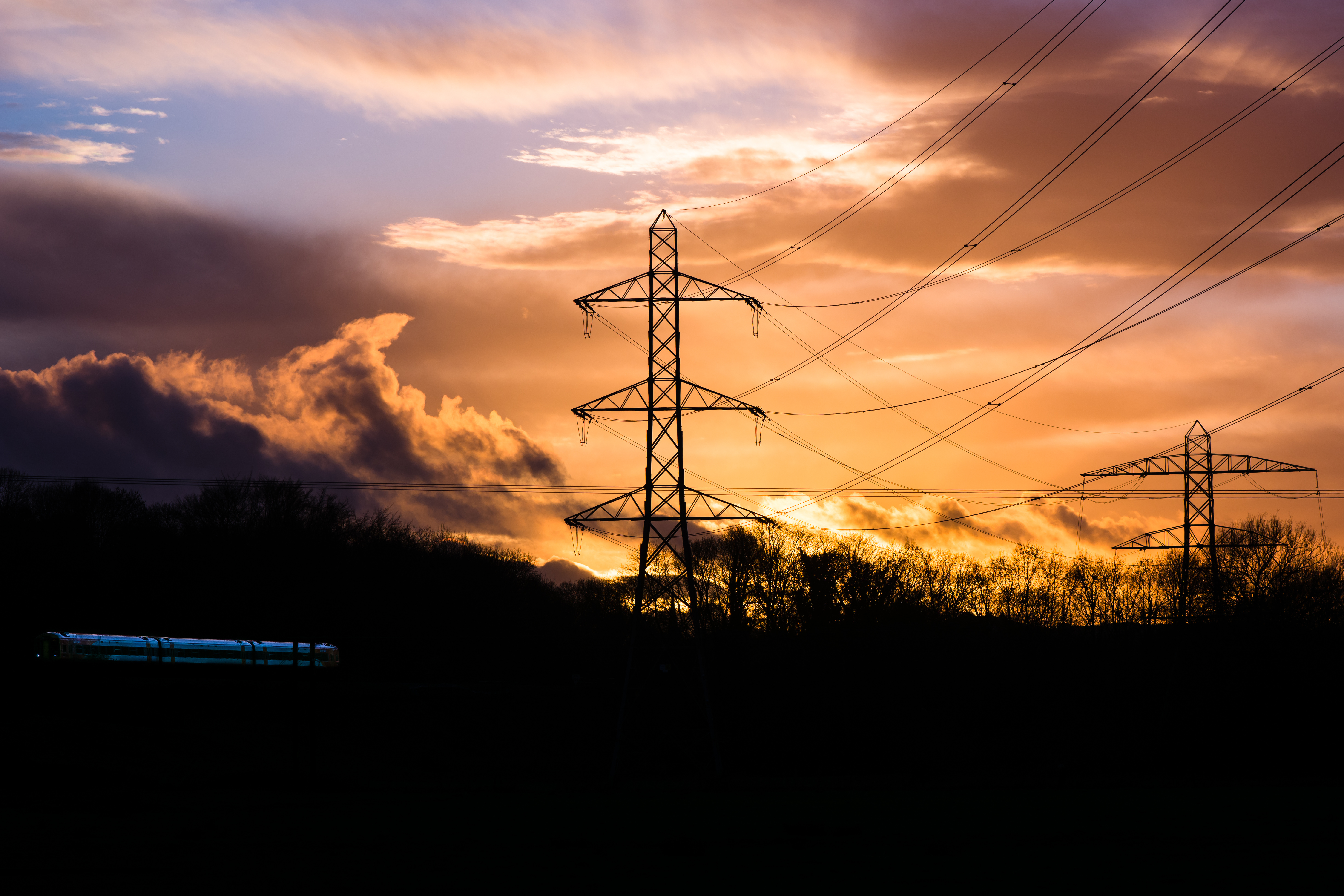
Interconnectors bring multiple benefits to our power system. They can help with security of supply by bringing in more power at times of systems stress, with the right system in place they can help reduce the need to rely on domestic fossil fuels and enable more renewable installation, and if electricity is being generated cheaper abroad, they can also create opportunities to reduce costs for consumers.
However, the correct framework must be put in place for interconnectors to bring such benefits while allowing for domestic projects that can help secure the country’s electricity supply.
As a start, interconnectors should be reclassified – known as de-rating – to compete with technologies on an equal footing.
Drax’s proposed OCGT plants, which can very quickly start up and provide the grid with the power and balancing services it needs, before switching off again, could offer a more reliable route to grid stability than such overwhelming dependence on interconnectors will. In addition, the coal-to-gas and battery plans at Drax Power Station, would prove to be a highly flexible national asset.
New gas and interconnectors should be able to compete fairly with one another. Policymakers should facilitate a system that allows competing technologies to exist in a cost beneficial way. Both interconnectors and domestic thermal power generators can play their part in creating stability, transitioning towards a decarbonised economy and fitting within the UK’s industrial strategy.
In 1961, when the first interconnector was switched on it marked a new age of continental co-operation. Five decades on we should not forget this goal. In an ever more complex grid, what we need is different technologies, systems and countries working together to achieve a flexible, stable and cleaner power system for everyone.
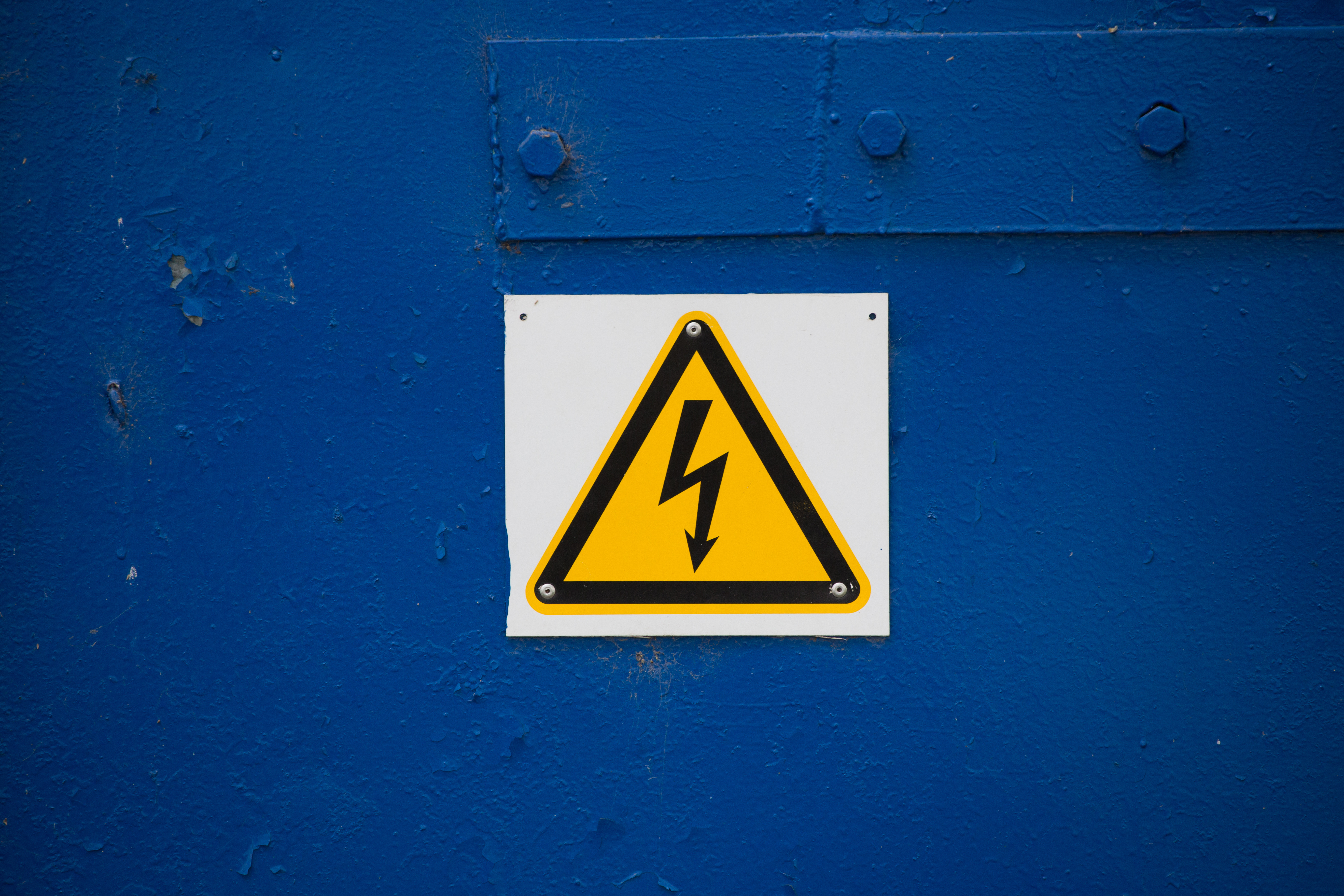
In day-to-day life, the electricity system normally plays a consistent, unfluctuating role, powering the same things, in the same way. However, behind the scenes electricity generation is a constant balancing act to keep the grid stable.
Power stations themselves are like living animals, in need of continuous adjustment. Transmission networks need continual maintenance and keeping the whole grid at a frequency of 50 Hz takes careful monitoring and fine-tuning.
One of the other constant challenges for Great Britain’s electricity system is keeping voltage under control.
Voltage is a way of expressing the potential difference in charge between two points in an electrical field. In more simplistic terms, it acts as the pressure that pushes charged electrons (known as the current) through an electric circuit.
Great Britain’s National Grid system runs at a voltage of 400 kilovolts (kV) and 275kV (Scotland also uses 132kV). It is then reduced in a series of steps by transformers to levels suitable for supply to customers, for example 11kV for heavy industrial or 230 volts (V) when delivered to homes by regional distribution networks.
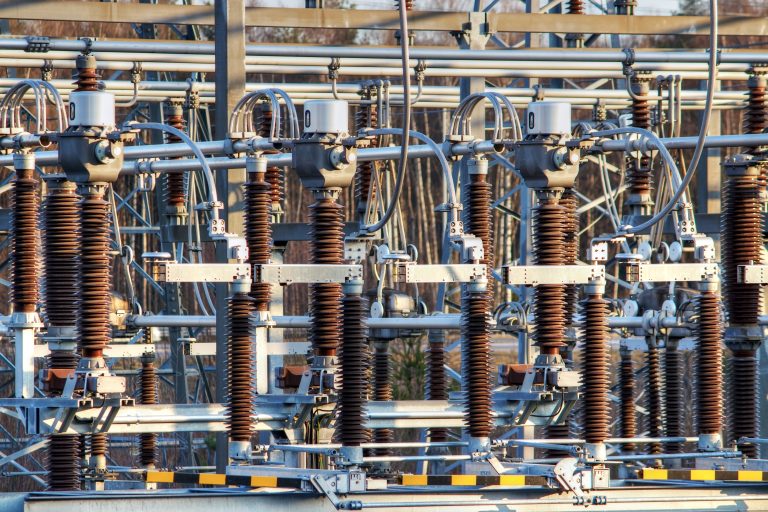
Keeping the voltage steady requires careful management. A deviation as small as 5% above or below can lead to increased wear and tear of equipment – and additional maintenance costs. Or even large-scale blackouts. Power stations such as Drax can control the voltage level through what’s known as reactive power.
“If voltage is high, absorbing reactive power back into the generator reduces it,” says Drax Lead Engineer Gary Preece. “By contrast, generating reactive power increases the voltage.”
Reactive power is made in an electricity generator alongside ‘active power’ (the electricity that powers our lights and devices) and National Grid can request generators such as Drax to either absorb or produce more of it as it’s needed to control voltage.
So how is a generator spinning at 3,000 rpm switched from producing to absorbing reactive power? All it takes is the turn of a tap.
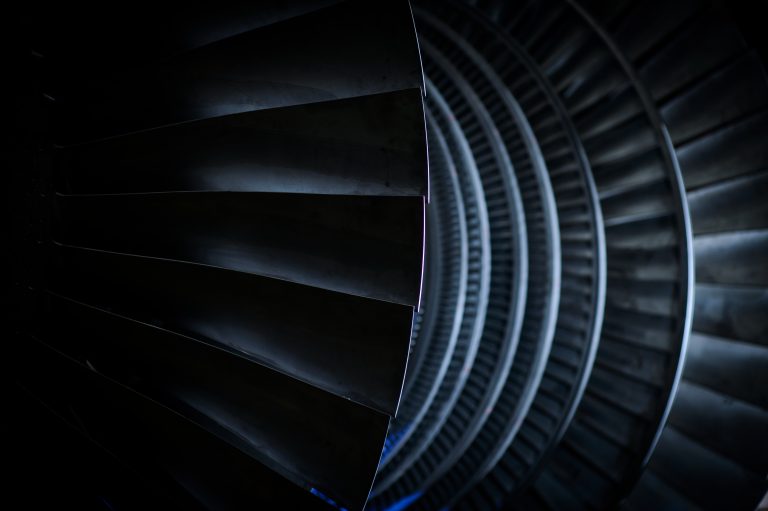
Taps along a transformer allow a certain portion of the winding – which make up a transformer’s active part with the core – to be selected or unselected. This allows the transformer to alter what’s known as the ‘phase angle’, which refers to the relationship between apparent power (made up of reactive power and active power) and active power. This change in the phase angle regulates the ‘power factor’.
Power factor is measured between 0 and 1. Between 1 and 0 lagging means a generator is producing reactive power and increasing overall voltage, whereas between 1 and 0 leading means it is absorbing reactive power and reducing voltage.
That absorbed reactive power doesn’t just disappear, rather it transfers to heat at the back end of the power station’s generator. “Temperatures can be in excess of 60 degree Celsius,” says Preece. “There’s also a lot of vibration caused by the changes in flux at the end of the generator, this can cause long term damage to the winding.”
As the generators continue to produce active power while absorbing reactive power the conditions begin to reduce efficiency and, if prolonged, begin to damage the machines. Drax’s advantage here is that it operates six turbines, all of which are capable of switching between delivering or absorbing reactive power, or vice versa, in under two minutes.
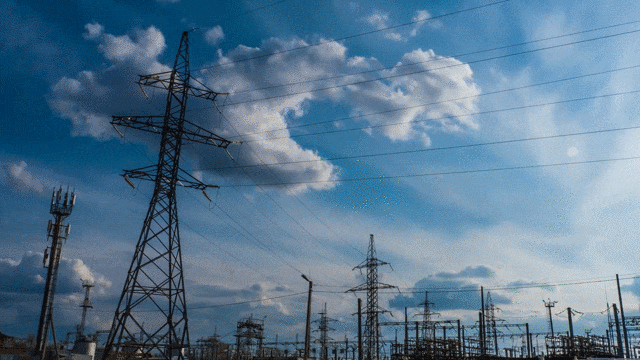
The changing nature of Great Britain’s energy supply means voltage management is trickier than ever. Voltage creeps up when power lines are lightly loaded. The increase of decentralised generation – such as solar panels and small-scale onshore wind farms operating to directly supply specific localities or a number of customers embedded on regional electricity networks – means this is becoming more common around the grid. This creates a greater demand for the kind of reactive power absorption and voltage management that Drax Power Station carries out.
Grid-scale batteries are being increasingly developed as a means of storing power from weather dependent renewable sources. This power can then be pumped onto the grid when demand is high. In a similar manner, these storage systems can also absorb reactive power when there’s too much on the system and discharge it when it’s needed – bringing the voltage down and up respectively.
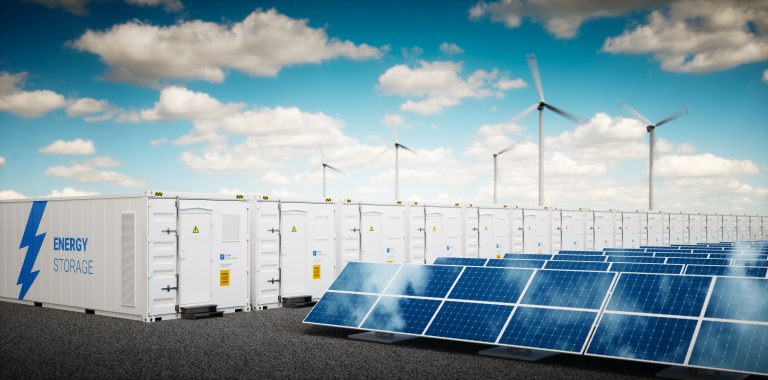
“The trouble is, grid-scale battery storage systems need to be absolutely huge, and a 100 MW facility would be close to the size of football field and double stacked,” explains Preece. “They are also not synchronised to the grid as a thermal turbine generator would be.” Subsequently there is no contribution to inertia.
As Great Britain’s power system continues to evolve, maintaining its stability also needs to adapt. Where once the challenge lay in keeping voltage high and enough reactive power on the grid, today it’s absorbing reactive power and keeping voltage down. It highlights the need for thermal generators that are designed to quickly switch between generating and absorbing to support the wider network.
This story is part of a series on the lesser-known electricity markets within the areas of balancing services, system support services and ancillary services. Read more about reserve power, system inertia, black start, reactive power and frequency response. View a summary at The great balancing act: what it takes to keep the power grid stable and find out what lies ahead by reading Balancing for the renewable future and Maintaining electricity grid stability during rapid decarbonisation.

On 26 April 2018, Drax Group plc’s (“Drax”) indirect wholly owned subsidiary, Drax Finco plc, completed and settled its offering (the “Offering”) of U.S. dollar denominated senior secured notes due November 2025 (the “Notes”), in an aggregate principal amount of $300.0 million.
Further to the notice of conditional redemption published on April 13, 2018 (the “Notice”), the funds are sufficient, together with cash on hand, to pay the Redemption Price (as defined in the Notice) for all of the outstanding £200,000,000 Senior Secured Floating Rate Notes due 2022 (the “Notes”), including applicable premium, in full, and to pay all related expenses in respect of the redemption on or prior to the Redemption Date (as defined in the Notice), which Notes have been conditionally called to be redeemed on 1 May 2018. As such, the Refinancing Condition (as defined in the Notice) has been satisfied, and the redemption of the Notes will occur on 1 May 2018.
Accrued and unpaid interest on the Notes from 1 February 2018 to, but not including, 1 May 2018 will be paid to holders of record on 15 April 2018 in the aggregate amount of £2,230,180.27.
Mark Strafford
Drax External Communications:
Ali Lewis
Website: www.drax.com
This release is for information purposes only and does not constitute a prospectus or any offer to sell or the solicitation of an offer to buy any security in the United States of America or in any other jurisdiction. Securities may not be offered or sold in the United States of America absent registration or an exemption from registration under the U.S. Securities Act of 1933, as amended (the “Securities Act”). The Notes will be offered in a private offering exempt from the registration requirements of the Securities Act and will accordingly be offered only to (i) qualified institutional buyers pursuant to Rule 144A under the Securities Act and (ii) certain non-U.S. persons outside the United States in compliance with Regulation S under the Securities Act. No indebtedness incurred in connection with any other financing transactions will be registered under the Securities Act.
This communication is directed only at persons who (i) have professional experience in matters relating to investments falling within Article 19(5) of the Financial Services and Markets Act 2000 (Financial Promotion) Order 2005 as amended (the “Order”), (ii) are persons falling within Article 49(2)(a) to (d) (“high net worth companies, unincorporated associations, etc.”) of the Order, (iii) are persons who are outside the United Kingdom, and (iv) are persons to whom an invitation or inducement to engage in investment activity (within the meaning of section 21 of the Financial Services and Markets Act 2000) in connection with the issue or sale of any notes may otherwise lawfully be communicated or caused to be communicated (all such persons together being referred to as “relevant persons”). Any investment activity to which this communication relates will only be available to, and will only be engaged in with, relevant persons. Any person who is not a relevant person should not act or rely on this document or any of its contents.
This announcement is not a public offering in the Grand Duchy of Luxembourg or an offer of securities to the public in any European Economic Area member state that has implemented Directive 2003/71/EC, and any amendments thereto (together with any applicable implementing measures in any member state, the “Prospectus Directive”).
Manufacturer target market (MiFID II product governance) is eligible counterparties and professional clients only (all distribution channels). No PRIIPs key information document (KID) has been prepared as the Notes are not available to retail investors in the European Economic Area.
This release includes forward-looking statements within the meaning of the securities laws of certain applicable jurisdictions. These forward-looking statements can be identified by the use of forward-looking terminology, including, but not limited to, terms such as “aim”, “anticipate”, “assume”, “believe”, “continue”, “could”, “estimate”, “expect”, “forecast”, “guidance”, “intend”, “may”, “outlook”, “plan”, “predict”, “project”, “should”, “will” or “would” or, in each case, their negative, or other variations or comparable terminology. These forward-looking statements include, but are not limited to, all statements other than statements of historical facts and include statements regarding Drax’s intentions, beliefs or current expectations concerning, among other things, Drax’s future financial conditions and performance, results of operations and liquidity, strategy, plans, objectives, prospects, growth, goals and targets, future developments in the markets in which Drax participate or are seeking to participate, and anticipated regulatory changes in the industry in which Drax operate. By their nature, forward-looking statements involve known and unknown risks, uncertainties and other factors because they relate to events and depend on circumstances that may or may not occur in the future. Readers are cautioned that forward-looking statements are not guarantees of future performance and are based on numerous assumptions. Given these risks and uncertainties, readers should not rely on forward looking statements as a prediction of actual results.
END

Drax holds its Annual General Meeting at 11:30am today at The Grand Hotel & Spa, Station Rise, York YO1 6GD. At this meeting Philip Cox CBE, Chairman of Drax Group, and Will Gardiner, Chief Executive Officer (CEO) of Drax Group, will make the following comments:
 “2017 was an important year for the Group with the development of our strategy, a new dividend policy and the departure of Dorothy Thompson who announced her intention to stand down as CEO. I would like to thank Dorothy for her enormous contribution to the Group over the last 13 years.
“2017 was an important year for the Group with the development of our strategy, a new dividend policy and the departure of Dorothy Thompson who announced her intention to stand down as CEO. I would like to thank Dorothy for her enormous contribution to the Group over the last 13 years.
Dorothy is succeeded by Will Gardiner, who was previously Group Chief Financial Officer (CFO) and a key architect of our strategy. His appointment follows a thorough review of internal and external candidates and is a natural progression after two years working alongside Dorothy developing our strategy, which remains clear and unchanged. I am confident this strategy will create significant benefits for all Drax’s stakeholders.”

“I am very pleased to have taken over as CEO of the Drax Group. I have greatly enjoyed working alongside Dorothy Thompson for the past two years as CFO. Having worked closely with the Board and executive team, I know that I will be leading a great team. I have also worked closely on developing our strategy and I look forward to continuing to deliver it and taking advantage of the opportunities ahead.
In 2017 we made significant progress with the strategy we announced in December 2016. We completed the acquisition of Opus Energy – a leading challenger brand in the UK Small and Medium-sized Enterprise (SME) energy market; we acquired a third biomass pellet plant (LaSalle Bioenergy), which significantly increases our pellet production capacity; and we continued to develop options for flexible gas generation at four sites around the UK as well as the exploration of coal-to-gas repowering at Drax Power Station. To support our strategy, we completed a refinancing in May and announced a new dividend policy in June.
We have a major role to play in supporting the UK energy system, as it becomes increasingly ambitious in decarbonising. With confirmation of Government support for further biomass generation at Drax Power Station we are working on a fourth biomass unit conversion.
Through this flexible, low-carbon and customer-focused approach we aim to deliver higher quality earnings, with a reduction in commodity exposure alongside opportunities for growth.
Safety remains at the centre of our operational philosophy and we have performed well in this regard, although we continue to work to improve our performance across the Group. Biomass is a challenging fuel to manage. We work very hard to manage it carefully, but unfortunately, in December, we had a fire at Drax Power Station. It cost us several weeks of production but most importantly, no one was hurt. We are currently incorporating the lessons learned from that incident in our operations to ensure that we operate as safely as we can.
Our financial performance, which we measure with reference to EBITDA, was £229 million in 2017, significantly ahead of 2016 (£140 million).
This increase was principally from producing high levels of renewable power from sustainable biomass and growth in our Energy Supply and Pellet Production businesses. I am very pleased that all three of our businesses generated positive EBITDA(1) last year for the first time.
In June we announced a new dividend policy. This policy is to pay a dividend which is sustainable and expected to grow as the implementation of the strategy generates an increasing proportion of stable earnings and cash flows. In determining the rate of growth in dividends the Board will take account of contracted cash flows, the less predictable cash flows from the Group’s commodity based business and future investment opportunities. If there is a build-up of capital the Board will consider the most appropriate mechanism to return this to shareholders.
For 2017 we are recommending a total basic dividend of £50 million (12.3 pence per share) inclusive of a final dividend of £30 million, equivalent to 7.4 pence per share.
We are also currently undertaking a £50 million share buy-back programme. This is consistent with our capital allocation policy and commitment to returns to shareholders.
Sustainability remains at the heart of the business, both the specific sustainability of biomass and more broadly the long-term sustainability of the Group.
Biomass sustainability is in the financial and long-term interests of the business and we always strive to ensure all our pellets comply with our policy. It is fundamental to us that the biomass we use is sustainable and meets statutory requirements. We have a dedicated sustainability team whose role is to ensure the wood pellets we manufacture and use to generate electricity meet the requirements we have set ourselves in our Sustainability Policy and the criteria for sustainable biomass as established by the UK government.”
“The Board and its committees play an active role in guiding the Company and leading its strategy. We greatly value the contribution made by our Non-Executive Directors and during a time of transition their role is especially important.
The Board has been complemented by the appointment of two new Non-Executives. Firstly, David Nussbaum, whose in-depth knowledge of sustainability will support our continued focus in this area; and secondly, Nicola Hodson, whose experience in technology, business transformation and energy, will provide real value as the Group delivers its strategy.
As a Board, we are well aware that, to achieve our strategic objectives, our commitment to diversity is crucial and reducing our gender pay gap is an important part of this.
We must do more to attract, retain and progress women to ensure we’re an employer of choice for everyone who sees their future in energy. In this context, we are supportive of the goals of Hampton Alexander.
It only remains for me to say that your Board remains totally committed to the complementary aims of delivering sustainable long-term value for the Group, and of helping our country build a low-carbon economy.”
Mark Strafford +44 (0) 1757 612491
Ali Lewis +44 (0) 1757 612165
Website: www.drax.com
During 2017: